Project Title: Assessment of a Gopher Tortoise Aggregation in an Urbanized Area of Naples, Florida.
Principle Investigators: Jeffrey R. Schmid and Ian Bartoszek, Conservancy of Southwest Florida, 1450 Merrihue Dr., Naples, FL 34102
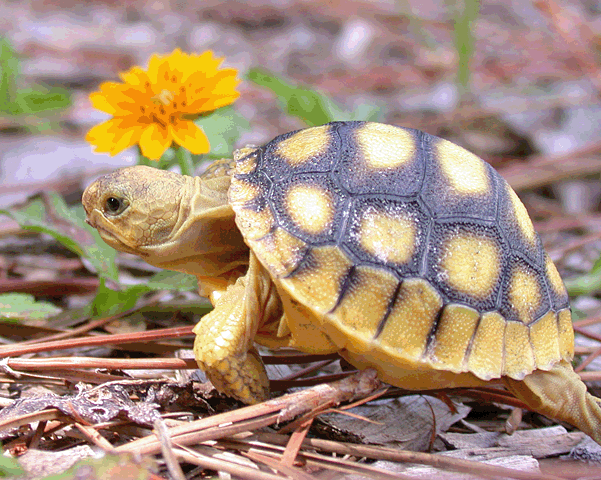 Need:
Need:
The gopher tortoise (Gopherus polyphemus) was recently uplisted as “threatened throughout its range in Florida.
Urban and agricultural development of the upland areas used by the gopher tortoise has resulted in fragmented habitat and drastically reduced populations. Southwest Florida has experienced rapid population growth and subsequent development over the past 50 years, resulting in “islands” of gopher tortoises and their habitat in the urbanized landscape.
The Conservancy recently purchased a 7- acre parcel adjacent to its facilities in Naples and efforts are underway to manage the property as a gopher tortoise preserve. Surveys of the parcel indicate there are approximately 100 active or inactive gopher tortoise burrows, and estimates of population size have ranged from 40-60 individuals based on burrow counts.
However, there is no information available on the demographics, functionality, or viability of this tortoise aggregation, and, at the least, a more reliable estimate of population size is needed to adequately manage the property as a gopher tortoise preserve.
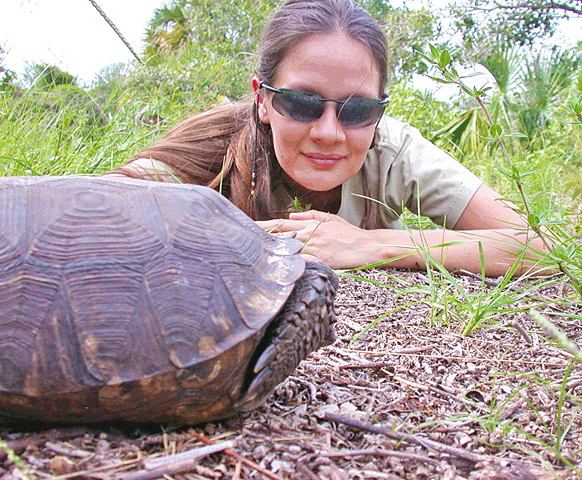
Objectives: The purpose of the proposed project is to provide detailed scientific information on gopher tortoises inhabiting a privately owned land parcel to aid the long-term management of the aggregation and habitat restoration efforts on this property. The objectives of this study are:
1) to determine the distribution of tortoises and the status of their burrows on the property,
2) to determine the population size, demographics (size classes and sex ratio for adults), feeding ecology, and health of the aggregation from field collections,
3) to identify the physical and biological factors influencing their distribution, and
4) to restore habitat characteristics on the parcel with regards to the needs of gopher tortoises.
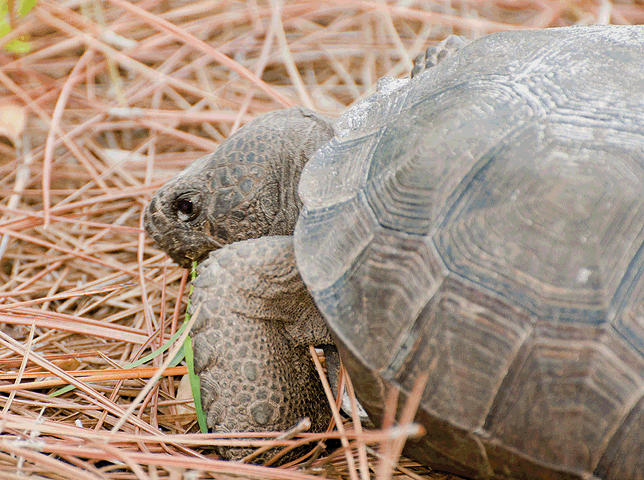 Expected Benefits: The proposed study will aid in the management of this threatened species by determining the distribution, population size, and demographics of gopher tortoises in an isolated parcel within an urbanized landscape, describing the habitats and forage essential to the viability of this aggregation, and identifying factors that may assist in improved conservation of the species and restoration of its habitat in urbanized areas. It is hoped that these efforts will be expanded to include other areas in Naples and Collier County to ensure the viability this and other fragmented tortoise aggregations.
Expected Benefits: The proposed study will aid in the management of this threatened species by determining the distribution, population size, and demographics of gopher tortoises in an isolated parcel within an urbanized landscape, describing the habitats and forage essential to the viability of this aggregation, and identifying factors that may assist in improved conservation of the species and restoration of its habitat in urbanized areas. It is hoped that these efforts will be expanded to include other areas in Naples and Collier County to ensure the viability this and other fragmented tortoise aggregations.
Photograph source of tortoise eating grass: Susan Leach Snyder, Conservancy of Southwest Florida volunteer.
Methodology: The entire parcel will be systematically surveyed for gopher tortoise burrows. Each burrow will be flagged and numbered. The width of each burrow will be measured with forester's caliper and the location recorded with a Global Positioning System (GPS). The status of each burrow will be determined as active (tracks or scrape-marks indicating recent tortoise activity), inactive (no observable activity), or abandoned (overgrown or damaged). Activity will also be determined by placing small sticks in the ground at the entrance to the burrow. A telescopic video camera may also be used to check burrow occupancy and the presence of burrow commensals. The distribution of burrows will be mapped and analyzed using geographic information system (GIS) software.
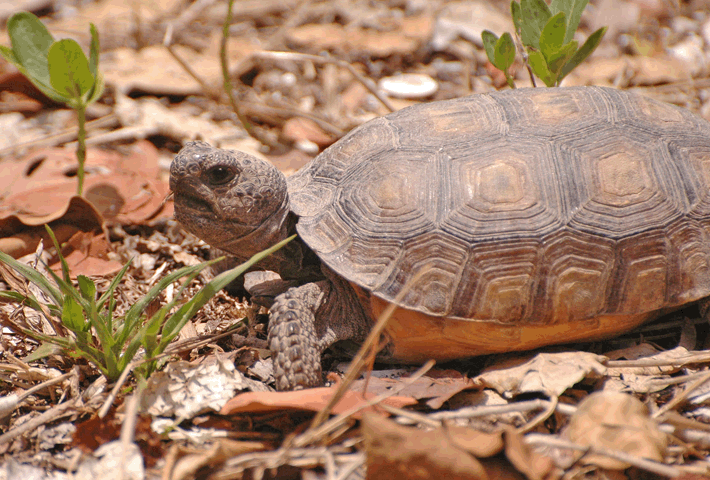 Tortoises will be captured by hand and using bucket traps. Bucket traps will consist of 5 gal. buckets with drainage holes in the bottom and will be buried at the entrance of active burrows. Efforts will be made to limit disturbance to nests beneath the burrow apron and traps will not be used if a nest is detected. Buckets will be checked twice daily when trapping tortoises. Additionally, Sherman traps and screen funnel traps will be set near the entrances of burrows to document the presence of commensals. Trapping/collecting will be conducted intensively during the initial phase of the proposed study in order to capture all tortoises inhabiting the parcel, and then for one week each month thereafter when tortoises are active. Mr. Bartoszek has experience in surveying gopher tortoise burrows, using fiber-optic scopes to verify burrow activity, and excavating tortoises for relocation into a tortoise preserve. Dr. Schmid has over 20 years experience with collecting listed species of marine turtles and a similar meticulous protocol will be employed in the present study.
Tortoises will be captured by hand and using bucket traps. Bucket traps will consist of 5 gal. buckets with drainage holes in the bottom and will be buried at the entrance of active burrows. Efforts will be made to limit disturbance to nests beneath the burrow apron and traps will not be used if a nest is detected. Buckets will be checked twice daily when trapping tortoises. Additionally, Sherman traps and screen funnel traps will be set near the entrances of burrows to document the presence of commensals. Trapping/collecting will be conducted intensively during the initial phase of the proposed study in order to capture all tortoises inhabiting the parcel, and then for one week each month thereafter when tortoises are active. Mr. Bartoszek has experience in surveying gopher tortoise burrows, using fiber-optic scopes to verify burrow activity, and excavating tortoises for relocation into a tortoise preserve. Dr. Schmid has over 20 years experience with collecting listed species of marine turtles and a similar meticulous protocol will be employed in the present study.
Photograph source of tortoise above beside grass: Susan Leach Snyder, Conservancy of Southwest Florida volunteer.
Each tortoise will be measured (carapace length and width, plastron length, and gular projection length), weighed, sexed, and given an individual identification code by notching or drilling holes in the marginal scutes. Age will be estimated by counting plastral annuli and ventral and dorsal digital photographs will be taken of each animal. Food items will be identified by observation of tortoise feeding and the collection of fecal samples. Tortoises will be held 24-48 hours in shaded plastic bins at the Conservancy’s facilities for fecal sample collection. Standard protocols will be used to collect blood samples from a subsample of tortoises to test for Upper Respiratory Tract Disease. The Conservancy conducts wildlife rehabilitation, including gopher tortoises, and has a veterinarian available on site. After data collection, tortoises will be released at the site of capture. Capture and diet data will be analyzed with respect to body size, age, and sex classes. Data from recaptured tortoises will be used to calculate growth rates and to construct von Bertalanffy growth models. Growth models may be useful for aging older turtles where the method of counting annuli becomes less reliable.

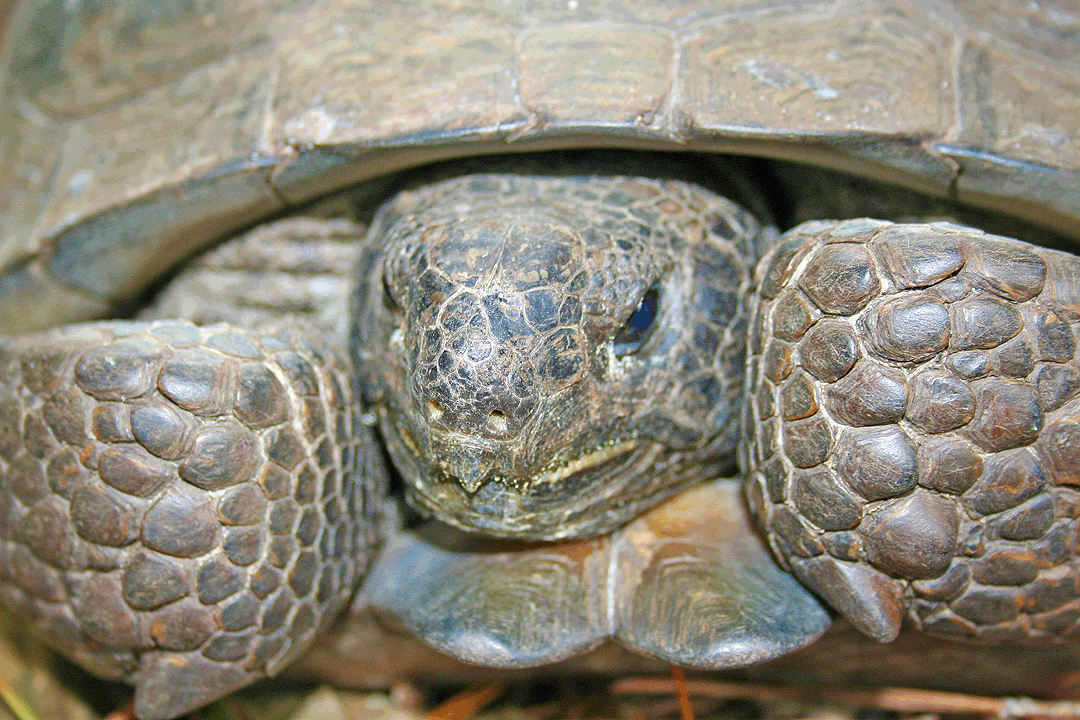
 Need
Need
 Expected Benefits:
Expected Benefits:  Tortoises will be captured by hand and using bucket traps. Bucket traps will consist of 5 gal. buckets with drainage holes in the bottom and will be buried at the entrance of active burrows. Efforts will be made to limit disturbance to nests beneath the burrow apron and traps will not be used if a nest is detected. Buckets will be checked twice daily when trapping tortoises. Additionally, Sherman traps and screen funnel traps will be set near the entrances of burrows to document the presence of commensals. Trapping/collecting will be conducted intensively during the initial phase of the proposed study in order to capture all tortoises inhabiting the parcel, and then for one week each month thereafter when tortoises are active. Mr. Bartoszek has experience in surveying gopher tortoise burrows, using fiber-optic scopes to verify burrow activity, and excavating tortoises for relocation into a tortoise preserve. Dr. Schmid has over 20 years experience with collecting listed species of marine turtles and a similar meticulous protocol will be employed in the present study.
Tortoises will be captured by hand and using bucket traps. Bucket traps will consist of 5 gal. buckets with drainage holes in the bottom and will be buried at the entrance of active burrows. Efforts will be made to limit disturbance to nests beneath the burrow apron and traps will not be used if a nest is detected. Buckets will be checked twice daily when trapping tortoises. Additionally, Sherman traps and screen funnel traps will be set near the entrances of burrows to document the presence of commensals. Trapping/collecting will be conducted intensively during the initial phase of the proposed study in order to capture all tortoises inhabiting the parcel, and then for one week each month thereafter when tortoises are active. Mr. Bartoszek has experience in surveying gopher tortoise burrows, using fiber-optic scopes to verify burrow activity, and excavating tortoises for relocation into a tortoise preserve. Dr. Schmid has over 20 years experience with collecting listed species of marine turtles and a similar meticulous protocol will be employed in the present study.